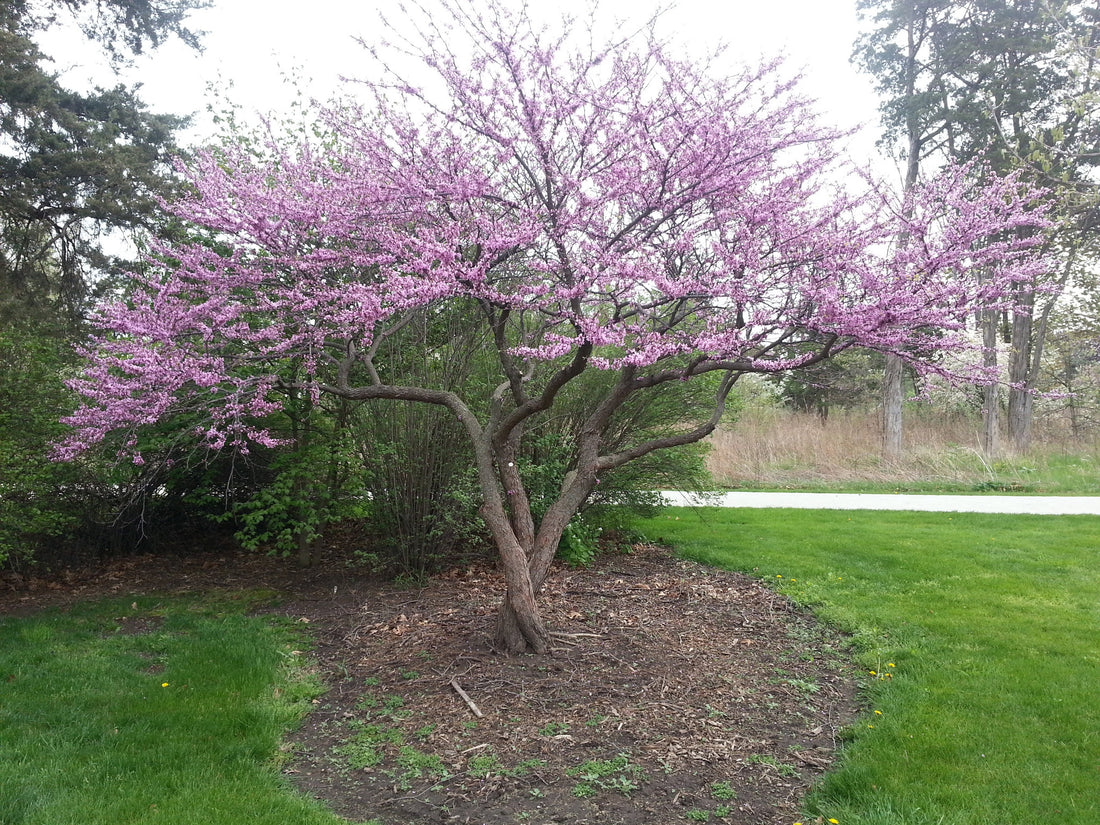I have recently seen several articles touting trees such as Bradford Pear and European black alder as easy to grow options for your yard. They are correct. What??????
Well they do grow well, really well, too well!!!! These species are non-native and increasingly invasive in Illinois and around the great lakes region. These are not excellent options for your yard! They are not even mediocre options, they are awful as they are on the cusp of being in increasingly crowded invasive species top ten list. Several others that are up there in the top ten woody invasive list in northern Illinois are black locust, black alder, white poplar, autumn olive, European cranberry bush, burning bush, and of course bush honeysuckle and buckthorn. Yes some of these are go to landscaping trees and bushes, but they should absolutely not be.
Why? They readily escape into natural areas quickly establishing and outcompeting native vegetation. Take the innocent Rhamnus cathartica (Buckthorn). It was introduced as an ornamental hedge row specimen in the mid 1800’s. Well, apparently innocent... It sat there for 100 years bumbling along until BOOM, something happened, it founds its legs in the Midwest and its population exponentially exploded in the mid 1900’s to now.
What about “sterile” specimens, their good right? Nope they still do not support ecology and often become invasive, just look at the Bradford pear. This is now in most prairies in north Illinois and is alarmingly, ALARMINGLY, becoming more and more abundant. Nature will find a way to defeat our simple human tricks. Why is this bad? Glad you asked.
Non-native invasive species typically have no natural predators or enemies when not in their homeland environment. This means nothing eats them to keep them in check. If not kept in check they grow uncontrollably in population, quickly becoming unbalanced and destroying pristine natural habitat. Also the space that could be occupied by a native plant that supports the local ecology has been sucked up by a plant that performs a negative value for local ecology. Native plants support local ecology by being food for insects, these insects pollinate food for humans and are food for birds and wildlife, and so on, the classic food chain. When you remove part of the chain you can get a sputtering engine. When you remove enough links in that chain you can get a trophic cascade or a collapse of the food chain. Who is at the top of that food chain, humans, scary right!
Does planting one bush in your yard destroy habitat, well technically no, but if you, your neighbor, and your neighbors neighbors plant these and they multiple the consequences can be dire over time.
What can you do, you say? Plant beautiful native trees and shrubs that are functional as well as excellent landscape features!!
What trees and shrubs are excellent landscaping trees in Illinois? Let’s start with the basics.
Shrubs / Small Trees:
Cercis canadensis (Redbud Tree) is an exquisite small tree, possibly the best for landscaping. It is easy to grow, shade tolerant and magnificently beautify. Its blazing pink flowers are excite in the spring and the heart shaped leaves delight though the summer and fall.
Cornus alternifolia (Pagoda Dogwood) is another unique beauty. This native shrub is called pagoda for its tiered branches and leaves that appear similar to an Asian pagoda structure. The spring flowers look like white clouds drifting above the pagoda rooftops. The beautiful structure of the tree satisfies thought the season.
Rosa setigera (Illinois Rose) is the real rose that’s a knock out!!! I would put it up against any landscaping rose for elegant beauty and resiliency. No need to pamper here, it has thousands of years of toughness built in. This rose will not disappoint with its pink flowers and deep red fall foliage.
Trees:
Quercus bicolor (Swamp White Oak) is easily the best street tree and landscaping oak in the Midwest. Salt tolerant, fast growing, majestic and supporting local native wildlife it does not get any better than this.
Celtis occidentalis (Hackberry) is another killer street and landscaping tree. It is a resilient tree, tolerant of many soil moistures and clay contents and is a looker to boot.
What can you lose, well except sleep for not planting the correct shrub or tree, and native one?
Nick

